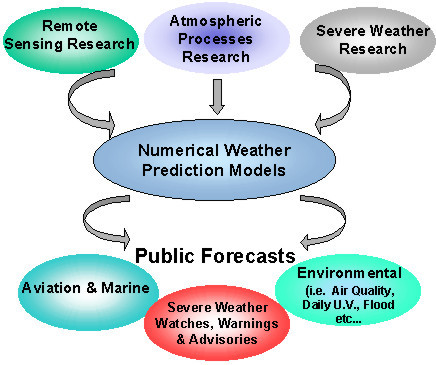Meteorological Research Branch (MRB)The Four Main Meteorological Issues:

The goal of the Meteorological Research Branch (MRB) is to provide the Meteorological Service of Canada with the 'science' that is needed to improve weather and environmental predictions. This 'science' includes understanding atmospheric processes, and developing sophisticated numerical systems (models) and remote-sensing technologies (such as Doppler Radar) for weather prediction. The ability to detect severe weather and to accurately predict it will reduce costly impacts on society and limit the risks to human life.
The Meteorological Research Branch Consists of Three Divisions:
Created :
2002-08-21
Modified :
2002-12-18
Reviewed :
2002-12-18
Url of this page : http://www.msc.ec.gc.ca
/ACSD/mrb/index_e.html The Green LaneTM, |
The default navigational mode of this site requires either [MSIE 4+], [Netscape 6+], [Opera 5+] or equivalent with JavaScript enabled. If you can not upgrade your browser, or can not enable JavaScript, please use the [text-only] version of this site.